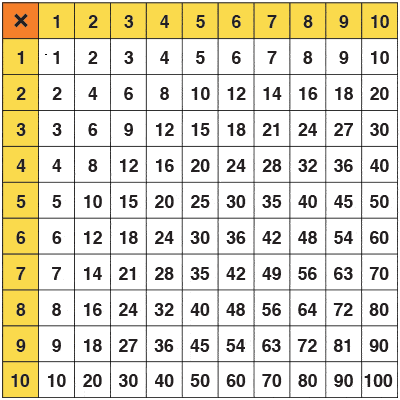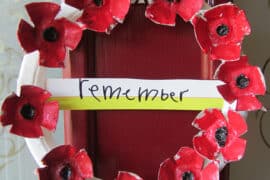? Mastering Chart Multiplication: A Parent’s Ultimate Guide ?
Hello amazing parents! Are you gearing up to tackle the world of multiplication with your kiddos? Fear not, because you’re about to discover the colorful and interactive world of chart multiplication! It’s a fantastic way to get your children to engage with numbers and start their journey to becoming little math whizzes. Get ready for some fun and learning rolled into one!
What Is Chart Multiplication and Why Is It Fabulous?
Chart multiplication, sometimes known as a multiplication table, is a grid that displays the products of numbers. It’s a simple, visual representation of numbers multiplied together—ranging typically from 1 to 10, or even up to 12 or more. Why is it so awesome, you ask? It’s because this method makes complex concepts palpable for young minds. It helps your child see patterns, fosters memory skills, and most importantly, boosts confidence in tackling multiplication problems!
Benefits of Chart Multiplication for Kids:
- Builds a strong foundation: A good grasp of multiplication charts paves the way to conquer more advanced math challenges with ease.
- Encourages independent learning: Your child can refer to the chart to complete homework or resolve doubts on their own.
- Improves memory: Regular practice with the chart helps in retaining multiplication facts, which is so important in math.
- Promotes pattern recognition: Recognizing patterns is critical for understanding math concepts, and multiplication charts are full of them!
Let’s Get Started with Chart Multiplication
Now that you’re equipped with the ‘why’, let’s dive into the ‘how’. We’ll ease into this journey with small, cheerful steps. So, put on your teaching cap and let your dining room table be the classroom—it’s chart multiplication time!
Step 1: Create Your Multiplication Chart
Begin by creating a multiplication chart with your child. This can be a fun arts and crafts project! You’ll need:
- A large sheet of paper or poster board
- Colorful markers or crayons
- Ruler (for creating the grid)
- A positive attitude and some creative flair!
Guide your child to draw a grid and fill in the numbers. Make sure to cheer them on with each number they write—positivity breeds enthusiasm!
Step 2: Discover the Patterns Together
Once your chart is up and beaming, it’s time to explore the magical land of patterns. Did you know that all the numbers in the 5’s column end with either 5 or 0? Or that the 10’s column is just like counting by tens? Share these exciting discoveries with your child and watch their little eyes light up with understanding!

? Five Things Parents Should Know in Preparing for Chart Multiplication ?
As you embark on this educational journey, there are a few key things to keep in mind that will set the scene for an amazing learning experience. Here’s what you need to know:
1. Patience is a Superpower
Just like learning to walk, mastering multiplication takes time. Every child has their own pace, so be patient. Encourage every effort, celebrate the small victories, and remember that consistent practice will eventually lead to success.
2. Engaging Environment Matters
Make learning multiplication an adventure! Create a bright and engaging space for your child to practice. Think colorful charts, fun stickers for rewards, and maybe even a ‘multiplication corner’ in your home.
3. Interactive Tools are Key
In today’s digital age, there are numerous apps and online resources that make learning multiplication interactive and fun. Incorporate these into your teaching to keep your child engaged and excited.
4. Real-Life Application is a Game-Changer
Help your child see the relevance of multiplication in everyday life. Cooking, shopping, or even planning a garden can incorporate multiplication, making it a real-world skill, not just a school subject.
5. Your Excitement is Contagious
If you’re excited about multiplication, chances are your child will be too. Show enthusiasm when teaching and learning alongside them. Your attitude can greatly influence their approach to math.
With these insights in your toolbelt, you’re more than ready to make chart multiplication a delightful and productive activity for your child. Let the learning begin!
Moving Forward: Advanced Chart Multiplication Tips
As your child becomes more comfortable with the basics, you’ll want to start introducing advanced concepts to keep them challenged and growing. Let’s take a look at a few ways to expand their multiplication mastery:
Breaking Down Larger Numbers
Now that they’re friends with the 1-12 times tables, it’s time to break into the teens and beyond. Show them how to use their knowledge of smaller numbers to tackle bigger ones, like breaking down 15 as 10 + 5.
Introduction to Properties of Multiplication
Introduce your child to the commutative, associative, and distributive properties of multiplication. These ‘big words’ have simple concepts behind them and open doors to algebraic thinking.
Using Multiple Charts for Comparative Learning
Lay out charts side by side and explore the differences and similarities. This visual comparison can lead to sharper analytical skills and a deeper understanding of numbers.
By familiarizing your child with these advanced tips and practices, you’re helping them to not only understand multiplication better but also to love the beauty and logic behind math. Keep nurturing their minds, dear parents, and the rewards will be beyond measure!
For more great fun click here. For more information see here
Disclaimer
The articles available via our website provide general information only and we strongly urge readers to exercise caution and conduct their own thorough research and fact-checking. The information presented should not be taken as absolute truth, and, to the maximum extent permitted by law, we will not be held liable for any inaccuracies or errors in the content. It is essential for individuals to independently verify and validate the information before making any decisions or taking any actions based on the articles.




